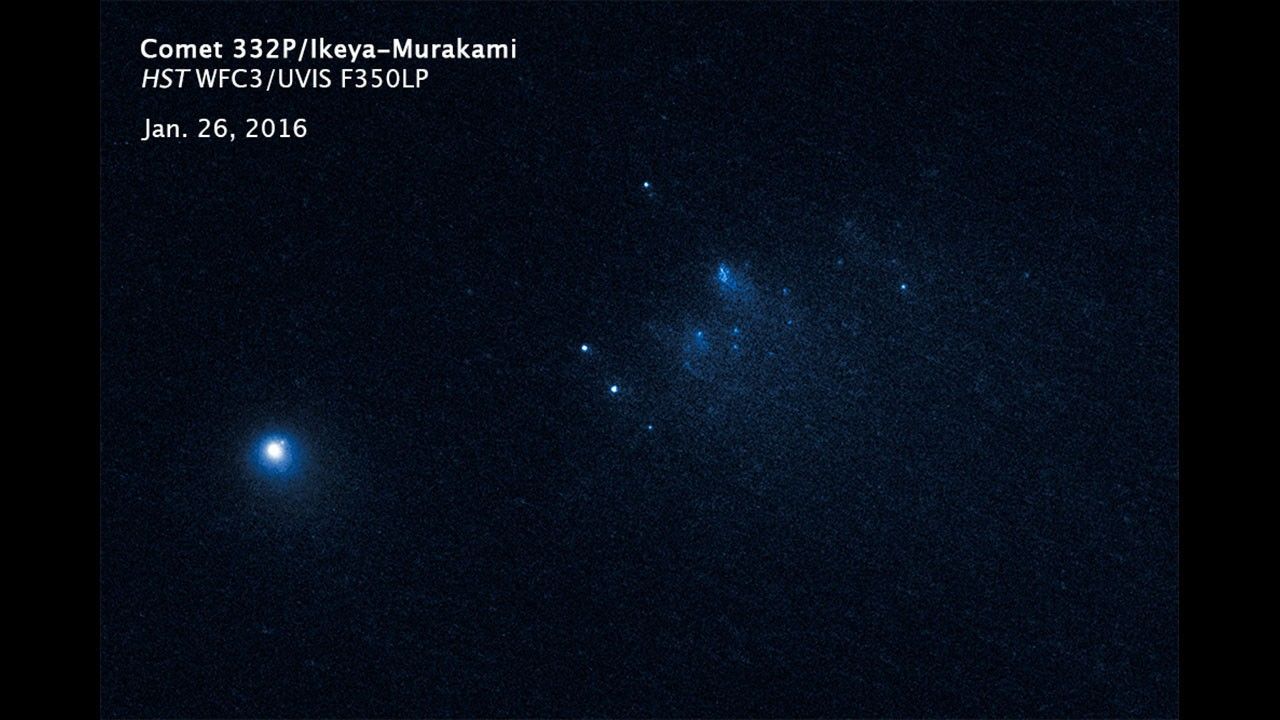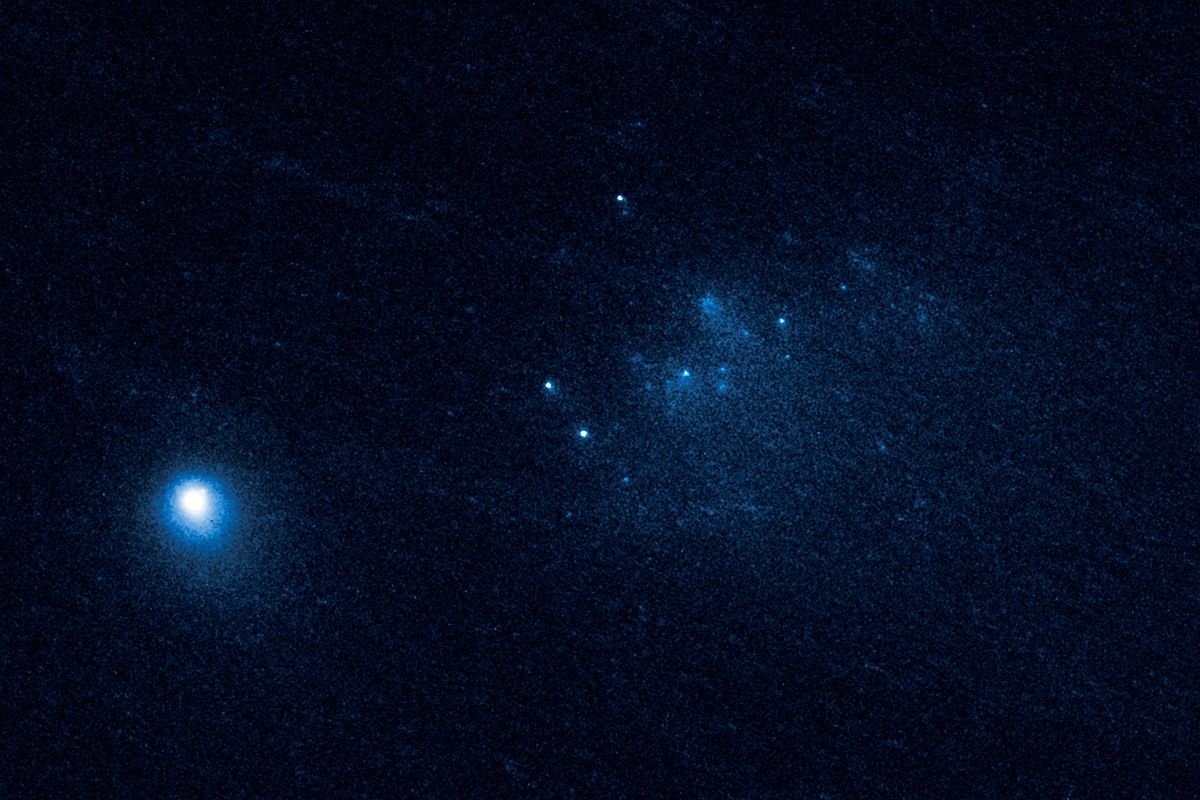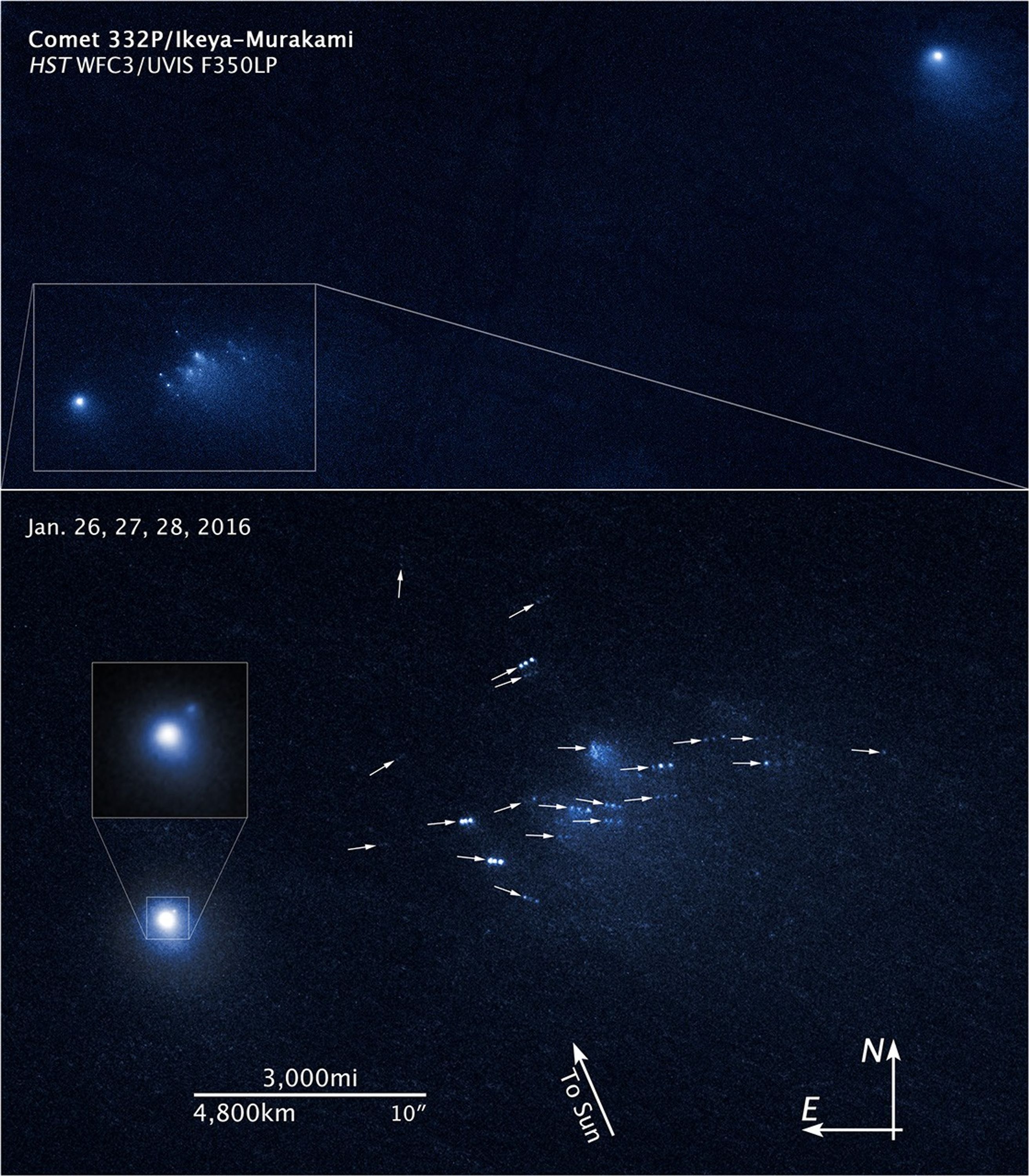1 min read
Comet 332P/Ikeya-Murakami

This NASA Hubble Space Telescope image reveals the ancient Comet 332P/Ikeya-Murakami disintegrating as it approaches the sun. The observations represent one of the sharpest views of an icy comet breaking apart.
The comet debris consists of a cluster of building-size chunks near the center of the image. They form a 3,000-mile-long trail, larger than the width of the continental U.S. The fragments are drifting away from the comet, dubbed Comet 332P, at a leisurely pace, roughly the walking speed of an adult.
The main nucleus of Comet 332P is the bright object at lower left. It measures 1,600 feet across, about the length of five football fields.
Hubble spied the debris on Jan. 26, 27, and 28, 2016, when the comet was 150 million miles from the sun, slightly beyond the orbit of Mars. The 4.5-billion-year-old comet, which originated from the Kuiper Belt, probably shed the debris over a short period of time, from October to December 2015.
The comet shards brighten and dim as icy patches on their surfaces rotate into and out of sunlight. The icy relics, totaling about 25 pieces, comprise about 4 percent of the comet and range in size from roughly 65 feet wide to 200 feet wide.
The tiny white dot just above the comet may be another fragment, signaling the beginning of another outburst. These observations provide insight into the volatile behavior of comets as they approach the sun and begin to vaporize, unleashing dynamical forces.
This image was taken on Jan. 27, 2016, with Hubble's Wide Field Camera 3.
About the Object
- DistanceDistanceThe physical distance from Earth to the astronomical object. Distances within our solar system are usually measured in Astronomical Units (AU). Distances between stars are usually measured in light-years. Interstellar distances can also be measured in parsecs.The position of the comet changes as it and Earth travel on their orbits through the solar system. The comet was approximately 0.68 AU (67 million miles or 100 million kilometers) from Earth at the time of these observations.
About the Data
- Data DescriptionData DescriptionProposal: A description of the observations, their scientific justification, and the links to the data available in the science archive.
Science Team: The astronomers who planned the observations and analyzed the data. "PI" refers to the Principal Investigator.Data were provided through HST proposal 14474: D. Jewitt (UCLA), M. Mutchler (STScI), H. Weaver (JHU/APL), J. Agarwal (MPI), M.-T. Hui (UCLA), M. Ishiguro (Seoul National Univ.), J. Li (UCLA), and J. Kleyna, K. Meech, R. Wainscoat, and R. Weryk (Univ. Hawaii). - InstrumentInstrumentThe science instrument used to produce the data.HST>WFC3/UVIS
- Exposure DatesExposure DatesThe date(s) that the telescope made its observations and the total exposure time.January 26, 27, 28, 2016; Exposure Time: 100 minutes total exposure
- FiltersFiltersThe camera filters that were used in the science observations.F350LP 350nm (long pass)
- Object NameObject NameA name or catalog number that astronomers use to identify an astronomical object.Comet 332P/Ikeya-Murakami
- Object DescriptionObject DescriptionThe type of astronomical object.Short-period comet
- Release DateSeptember 15, 2016
- Science ReleaseHubble Takes Close-up Look at Disintegrating Comet
- Credit

Several images of Comet 332P were made by HST's WFC3/UVIS instrument on three consecutive days with a single filter, F350LP. The exposures from each day were combined into a single image. Color was added to the combined grayscale images using a color mapping.

Related Images & Videos

Comet 332P/Ikeya-Mirakami Disintegration Sequence
This video, made from a sequence of Hubble Space Telescope images, shows the slow migration of building-size fragments of Comet 332P/Ikeya-Murakami over a three-day period in January 2016. The pieces broke off of the main nucleus in late 2015 as the icy, ancient comet approached...
Share
Details
Claire Andreoli
NASA’s Goddard Space Flight Center
Greenbelt, Maryland
claire.andreoli@nasa.gov



































